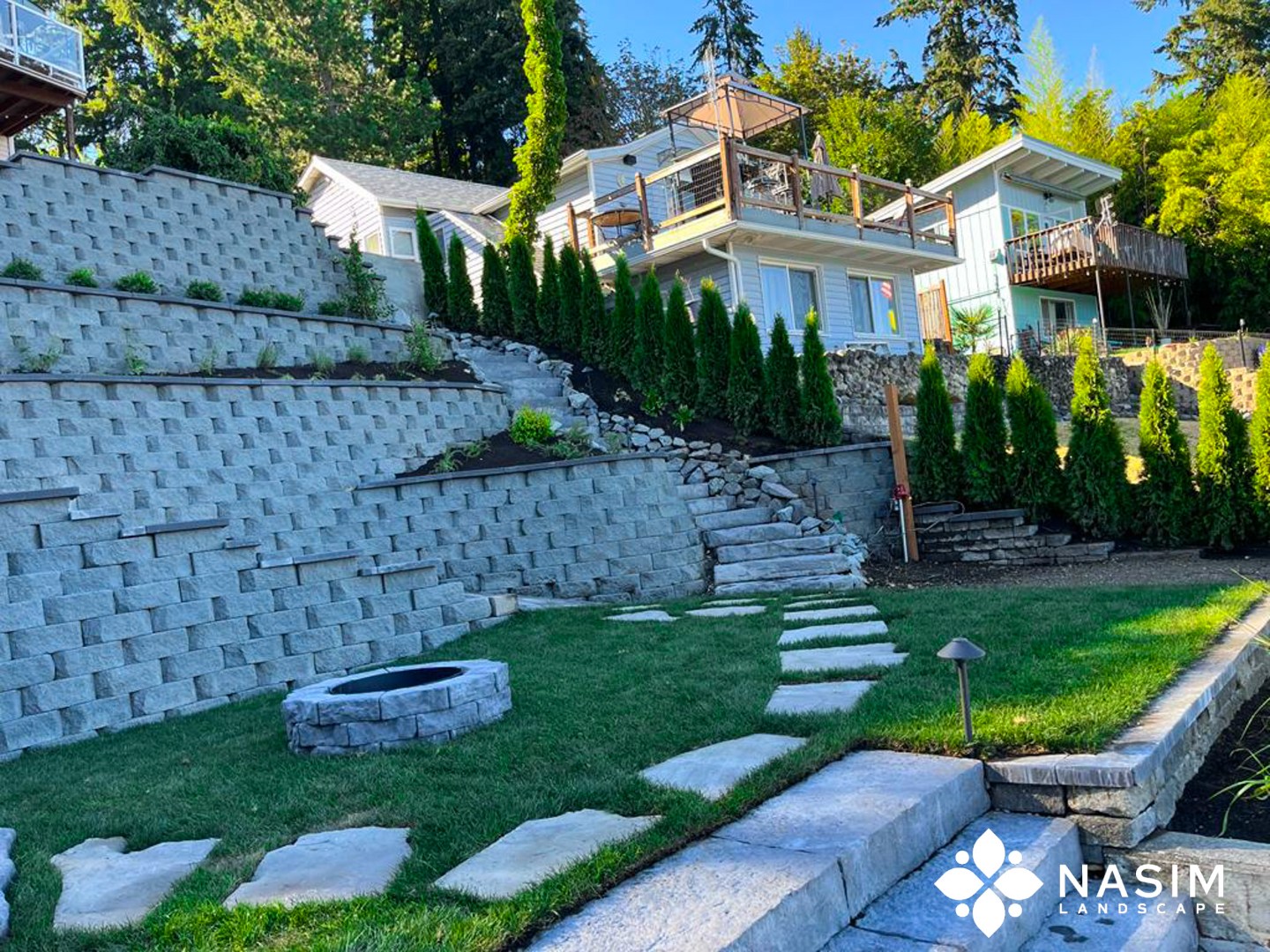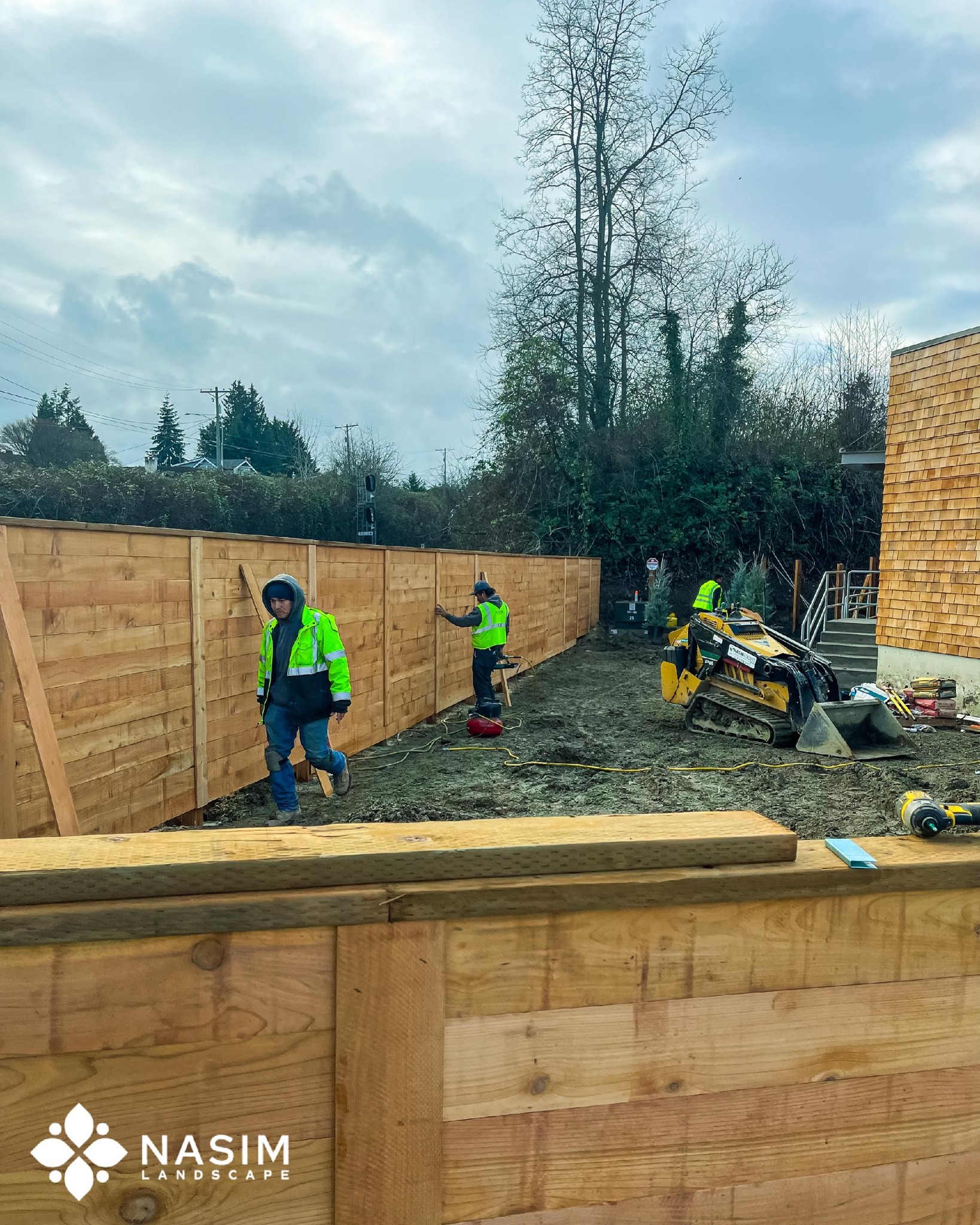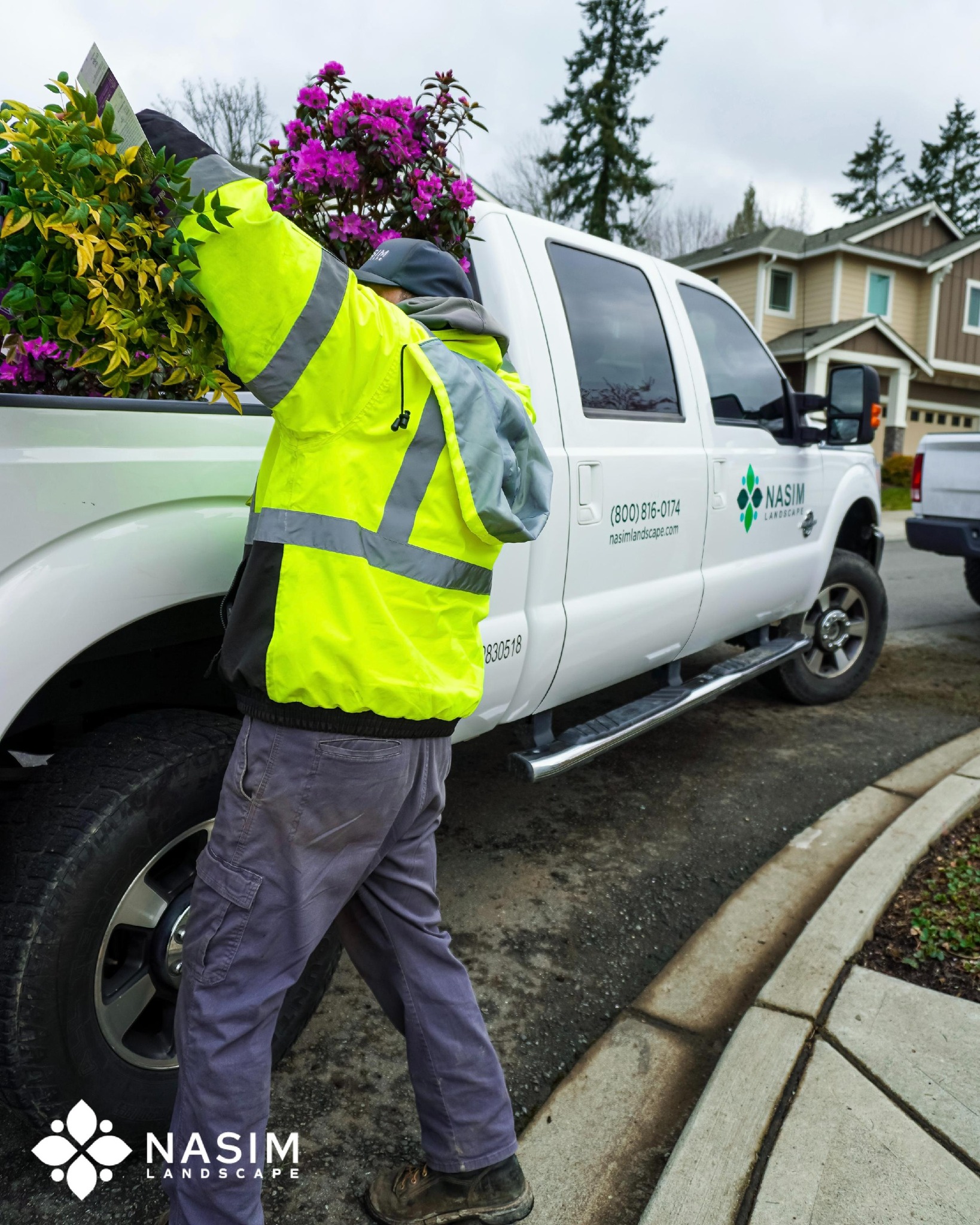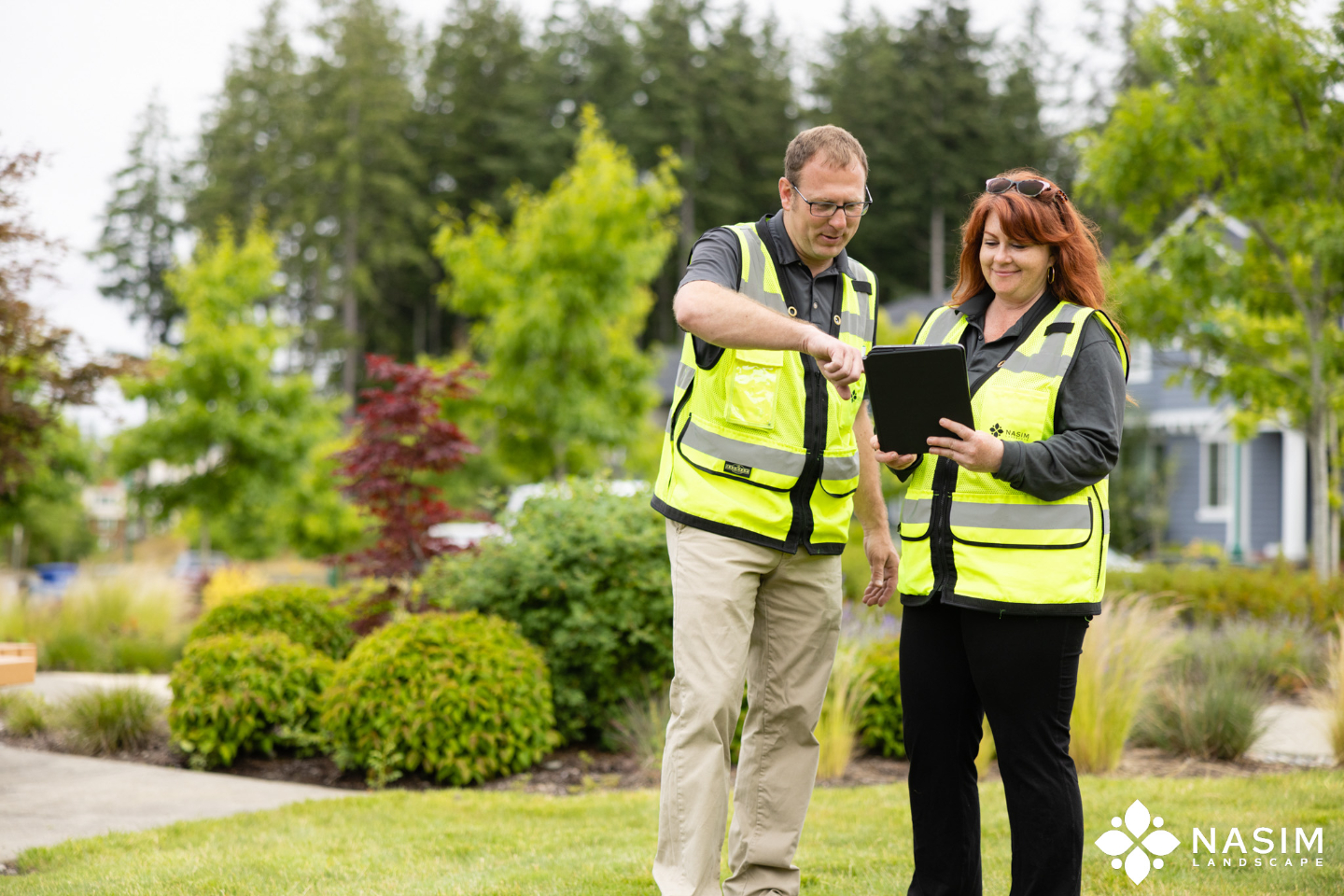Fall Commercial Landscape Renovations: ROI Guide for Tacoma Property Managers
Tacoma’s fall season brings ideal conditions for commercial landscape renovations. Learn which upgrades are worth your investment and how to plan projects that boost property value, attract tenants, and protect your landscape through the seasons.
As a commercial property manager in Tacoma, fall presents a critical window to boost tenant retention, improve property valuation, and strengthen your competitive market position. While many property managers defer outdoor upgrades until spring, the cooler temperatures and stable conditions of autumn make it the optimal time to deliver lasting value.
This guide shows you exactly which upgrades deliver measurable ROI, what they cost, what maintenance they require, and how to sequence them for maximum impact.
Commercial Landscape Upgrades That Add Value for Tacoma Properties
The three upgrades that move the needle for commercial property managers are hardscaping, privacy screens, and planting. Each addresses different tenant needs and property management challenges.
Tacoma Commercial Hardscaping Costs & ROI
Well-designed hardscaping can increase property value by up to 12%, making it one of the highest-impact improvements for tenant attraction and sales appeal.
Commercial Privacy Screens & Tenant Retention
Privacy is one of the top retention drivers for commercial tenants. Professionally designed screens create comfortable outdoor spaces while managing Tacoma's wind and moisture exposure.
Fall Planting ROI for Tacoma Commercial Properties
Fall planting gives you a thriving landscape by spring's peak leasing season—a significant competitive advantage.
Why Fall Is Peak Renovation Season for Commercial Properties in Tacoma
Operational Efficiency During Fall Renovations
Cooler weather minimizes tenant disruption. Projects complete before the November–December holiday season when property activity slows. This means less impact on business operations and customer access.
Plant Establishment & Spring Growth
Roots establish deeply before winter dormancy, meaning spring growth is already underway when the busy leasing season begins. Plants installed in fall waste no time recovering from transplant shock.
While planting in spring is possible, it offers less advantage. Spring-planted material doesn't have time to establish deep roots before the dry, hot summer months. Fall-planted material, by contrast, has several months to develop a strong root system before facing heat stress.
Construction Conditions & Soil Workability
The ground remains workable without the saturation that April rains bring to Western Washington. Proper soil compaction and hardscape installation are easier, resulting in longer-lasting installations that won't shift or settle. This is especially critical in Tacoma's seasonal climate.

Commercial Hardscaping: ROI & Cost Breakdown for Tacoma
Hardscaping Benefits for Commercial Properties
Well-designed hardscaping strengthens property appeal and creates functional outdoor spaces that tenants value. Hardscaping also plays a critical role in drainage and site management.
Tacoma Commercial Hardscaping Project Types
Typical hardscaping projects include:
- Parking lot enhancements and permeable paver installations
- Entry plazas and pedestrian walkways
- Retaining walls for drainage and visual structure
- Loading area improvements for functional aesthetics
For a detailed breakdown of what drives hardscaping costs and how to budget strategically, see our guide on commercial landscaping costs in Tacoma.
Hardscaping Installation Benefits in Fall
Concrete and stone adhesives cure more evenly in cooler temperatures, extending installation lifespan. Ground conditions allow proper grading and soil compaction—critical for preventing settling and drainage issues that plague spring installations.
Maintenance Requirements
Annual pressure washing and joint re-sanding for pavers as needed. Maintenance requirements vary based on traffic levels and materials used.
For a comprehensive maintenance checklist covering all landscape elements, see our fall maintenance guide. Failure to maintain leads to weed growth, settling, and drainage failure, which is expensive to repair.
Hardscaping ROI Timeline
- Immediate: Curb appeal boost
- Mid-term (6–12 months): Property value increase at lease renewal or property sale
- Ongoing: Tenant retention typically improves within 60 days of completion

Privacy Screens: Comfort & Wind Protection
Why Privacy Matters
Privacy is one of the top retention drivers for commercial tenants. Commercial properties with professionally designed and well-maintained exteriors often command higher rental rates and sales prices. Privacy screens create comfortable outdoor spaces while managing wind and moisture exposure.
Materials & Options
Popular options include:
- Cedar or composite slat panel systems
- Decorative metal screens made of steel or aluminum with corrosion resistance
- Living screens using evergreen hedges such as laurels, bamboo, or photinia
- Mixed solutions combining structural and natural elements
Installation Benefits in Fall
Hedges planted in fall establish deeper root systems before winter, improving survival rates and spring growth. Structural panels install easily in stable soil without drainage complications.
Maintenance
Composite and metal panels require annual inspection for corrosion or damage. Living hedges need periodic trimming and seasonal feeding based on growth patterns. Maintenance requirements vary by screen type and material.
Privacy Screen Timeline
- Immediate: Aesthetic improvement and tenant comfort
- Mid-term (6–12 months): Retention benefits appear at lease renewal
- Ongoing: Property appeal increases in photographs and virtual tours

Planting: Spring Appeal & Tenant Attraction
Why Fall Planting Works
While many property managers skip planting in fall, it's actually the ideal time. Cooler temperatures and regular rainfall create perfect conditions for root establishment. By spring, the peak leasing season, new plantings are already thriving and giving your property a vibrant, well-maintained appearance.
Planting Options
Typical installations include:
- Native evergreens for year-round texture
- Seasonal accent plantings
- Ground covers and ornamental grasses for visual softness
- Container installations for flexible, rotating aesthetics
Fall Planting Benefits
Plants installed in October–November establish root systems through winter dormancy. Come April–May leasing season, they emerge robust and attractive with no transplant shock or wilting.
Maintenance Requirements
Quarterly fertilizing, seasonal trimming, mulch refreshing, and pest monitoring are essential for healthy plant growth. Maintenance requirements vary based on planting design and site conditions.
For specific guidance on dormant pruning, a critical fall maintenance task, see our dormant pruning guide for commercial properties.
Many commercial properties benefit from outsourcing planting maintenance to ensure consistent quality and plant health. Neglected plantings wilt, attract pests, and damage property perception.
Planting Timeline
- Spring: Visual impact appears; tenant inquiries and lease renewals typically increase
- Long-term: Value compounds as plants mature

Prioritization Guide: Which Upgrade Should You Fund First?
High Immediate Impact Upgrades
Fund hardscaping first if entry areas look neglected or parking is cracked.
Fund privacy screens if tenants have complained about wind, views, or noise.
High Long-Term Value Upgrades
Fund planting after structural elements are in place.
Fund maintenance contracts to protect prior investments.
Budget-Constrained Phasing Strategy
For Tacoma property managers working with limited budgets, prioritize in this order:
- Privacy screens (if tenant feedback indicates need)
- Strategic planting in high-visibility areas
- Hardscaping as a phased multi-year project

How Property Improvements Add Value for Tacoma Commercial Properties
Calculating the Value of Landscape Improvements
The value of landscape improvements depends on multiple factors including property type, location, current condition, and tenant base. Rather than focusing on specific ROI percentages, consider how upgrades address your property's specific needs and enhance tenant experience.
Value Drivers for Landscape Improvements
Property improvements that address tenant concerns, like privacy issues or worn entries, typically deliver strong results. The specific value depends on your property's baseline condition, tenant feedback, and local market conditions.
For guidance on understanding what drives landscape value for your specific property, contact Nasim Landscape for a consultation.
The Maintenance Reality: Minimal but Critical
Why Maintenance Matters for Landscaping ROI
One of the top reasons commercial landscaping fails to deliver ROI is poor maintenance. Strategic upkeep protects your investment and maximizes tenant satisfaction.
Hardscaping Maintenance Tasks
Pressure washing and joint re-sanding for pavers as needed. These maintenance tasks are straightforward and prevent long-term damage like weed growth, settling, and drainage failure.
Privacy Screen Maintenance Tasks
Metal and composite panels need periodic inspection for corrosion or damage. Hedges need regular trimming based on growth patterns. Maintenance is straightforward with either material choice.
Planting Maintenance Tasks
This requires the most attention. Quarterly fertilizing, seasonal pruning, mulch refreshing, and pest monitoring are essential. Many commercial properties benefit from outsourcing this to a maintenance contractor to ensure consistent quality. Neglected plantings wilt, attract pests, and damage property perception.
Pro Tip: Maintenance during dormancy protects your investment. By the time spring arrives and heavy maintenance season begins, your new elements are already established and ready for routine care.
Integrating Elements for Maximum Impact
The most impactful commercial landscapes combine structure, privacy, and planting into one cohesive strategy.
A hardscaped entry without greenery looks unfinished.
Privacy screens without intentional planting feel industrial or temporary.
When these elements work together, they create professional outdoor spaces that attract tenants, retain staff, and increase property valuation.
Frequently Asked Questions: Commercial Property Manager Edition
- I have a limited budget this fall—which upgrade delivers the fastest ROI?
Hardscaping improvements like updated entries or plazas deliver immediate visual and functional impact, improving tenant perception and property value quickly. - How do I know if my property needs hardscaping upgrades?
Look for cracked pavement, poor drainage, or unattractive entryways. Potential tenants often comment on "tired" or "dated" entries during tours—a clear signal that upgrades are overdue. - Can landscaping improvements help me retain tenants during lease renewal?
Yes. Well-maintained landscapes rank in the top five tenant satisfaction drivers. Strategic upgrades before renewal periods can make a major difference in retention. - What's the difference between hiring a landscape contractor vs. a full design-build firm?
A contractor executes specific projects you define. A design-build firm (like Nasim Landscape) handles concept, design, phasing, and execution—ensuring all elements integrate for maximum impact. - How much maintenance am I actually taking on if I upgrade my landscape?
Hardscaping requires minimal upkeep. Planting requires more attention throughout the year, which is why many commercial properties outsource planting maintenance for consistent results. - Should I complete all upgrades at once or phase them over multiple seasons?
Phasing allows you to monitor ROI, adjust based on tenant feedback, and spread costs. A typical strategy:
Year 1 = Hardscaping
Year 2 = Privacy Screens
Year 3 = Planting & refinements - Will fall weather disrupt tenant operations during construction?
Cooler temperatures minimize disruption compared to spring work. Most projects can be scheduled around tenant access hours, and communication keeps everyone informed. - How quickly will I see property value increase?
Immediate improvements in curb appeal appear within weeks. Rental rate improvements typically occur within 6–12 months, and property appreciation compounds over 1–3 years. - What factors affect the cost of fall landscaping for commercial properties?
Project scope, materials, and site complexity are key. Drainage challenges or sloped terrain increase costs, while phased projects allow for controlled budgeting. - Should I hire a professional landscape firm or manage this in-house?
Professional firms deliver stronger ROI through proper grading, material selection, and project management. In-house management can lead to costly mistakes or delays.

Ready to Transform Your Tacoma Property?
Fall is your ideal window to strengthen your competitive position, retain tenants, and increase property value.
Strategic landscape upgrades—whether you start with hardscaping, privacy screens, or planting—deliver measurable returns.
20+ years serving Tacoma, Seattle, and Western Washington | 500+ commercial properties renovated
Learn more about our commercial landscape services and discover how Nasim Landscape helps property managers maximize ROI year-round.
For seasonal guidance on fall cleanup and leaf management, see our eco-friendly leaf removal guide.
Schedule a commercial property consultation with Nasim Landscape. We’ll assess your property’s unique strengths and challenges, recommend a phased upgrade strategy aligned with your budget and goals, and handle design, installation, and ongoing support.


.png)

